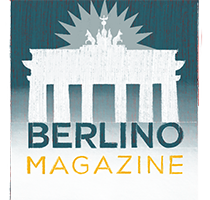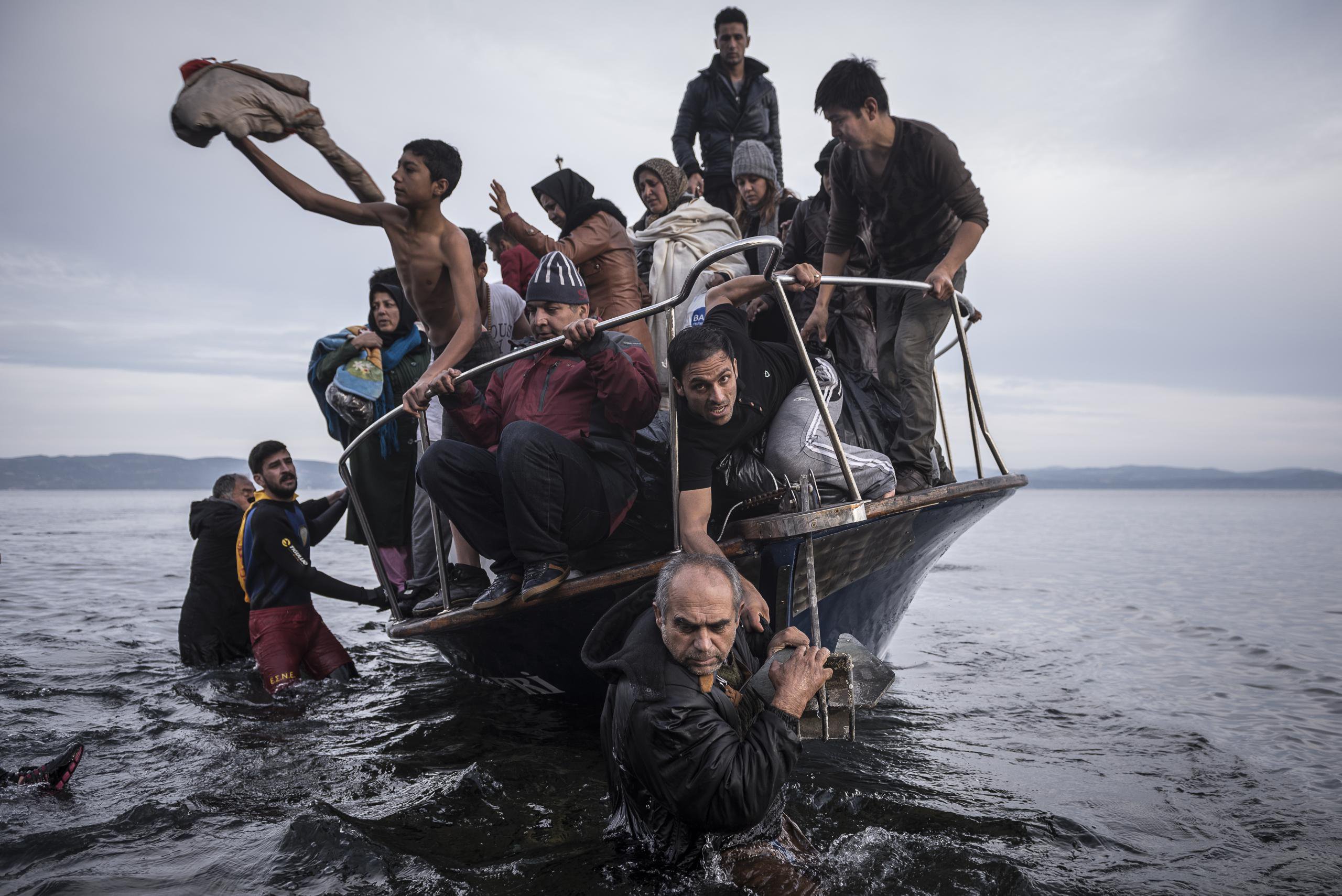10 eccezionali foto del World Press Photo 2016, in mostra gratis a Berlino
Un gruppo di rifugiati arrivano su un’imbarcazione di fortuna sull’isola greca di Lesbos. Lo scatto è del russo Sergey Ponomarev, è datata 16 novembre 2016 ed è stata pubblicata sul New York Times. È una delle foto premiate quest’anno con un dei World Press Photo Awards, i più prestigiosi premi di fotogiornalismo al mondo. La mostra che li raggruppa tutti è ora in tour tra i cinque continenti: 100 città, 45 paesi e un pubblico di circa 4 milioni di persone; sono questi i suoi numeri. Prime tappe della mostra sono state Poznan in Polonia e a Siviglia in Spagna lo scorso 27 aprile. Poi Roma, Lisbona, Minsk, Amburgo, Zurigo e, ora, fino al 26 giugno 2016 è visitabile alla Willy-Brandt-Haus di Berlino.
Le categorie del contest. Dal 1955, anno in cui l’organizzazione no-profit dall’omonimo nome è stata fondata, il concorso, oltre a selezionare la fotografia vincitrice del World Press Photo of the Year, determina altri vincitori nelle seguenti categorie: ‘General News’, ‘Spot News’, ‘Sports’, ‘Contemporary Issued’, ‘Daily Life’, ‘People’, ‘Nature’, ‘Long-Term Projects – Individual’, ‘Long-Term Projects – Group’. Dallo scatto del fotografo australiano Warren Richardson intitolata ‘Speranza di una nuova vita’ e che ritrae un neonato in procinto di essere preso in braccio da un rifugiato siriano che ha già oltrepassato una recinzione che divide la Serbia dall’Ungheria vicino Röszke, allo sciatore ceco Ondrej Bank immortalato da Christian Walgram, vincitore del primo premio singolo per la categoria ‘Sports‘. In mezzo la crisi dei migranti, manifestanti nella Place de la Nation a Parigi dopo l’attacco terroristico al giornale satirico Charlie Hebdo, un medico che spalma un unguento sulle ustioni di un giovane combattente del sedicente Stato Islamico in un ospedale ad Al-Hasaka, una regione a nordest della Siria controllata dai Kurdi. Ogni anno guerre, crisi, situazioni difficili ma soprattutto la libertà di espressione uniscono ogni singolo scatto.
Scatti sempre più interattivi. Oltre a poter seguire sui social Facebook, Twitter ed Instagram il profilo ‘World Press Photo’, è possibile utilizzare l’ashtag #WPPh16 e usare il proprio smartphone ‘interagendo’ con le singole foto. Grazie ad un code disponibile su ogni descrizione, il visitatore potrà ascoltare direttamente il fotografo parlare del suo lavoro/i, vedere le complete foto-storie, conoscere i dettagli tecnici delle fotografie e accedere alle descrizioni delle stesse in nove lingue diverse.In attesa di vedere i prossimi vincitori, la mostra continuerà il suo ‘viaggio’ fino al prossimo gennaio 2017 quando le migliori foto del 2016 saranno esposte in Israele, a Tel Aviv presso il Eretz Israel Museum.
World Press Photo 2016
fino al 26 giugno (domenica 5 giugno sarà chiusa)
da martedì a domenica dalle ore 12:00 alle ore 20:00
presso la Willy Brandt Haus,
Wilhelmstraße 140
10963 Berlino
ingresso gratuito
10 Foto e storie del World Press Photo Awards 2016
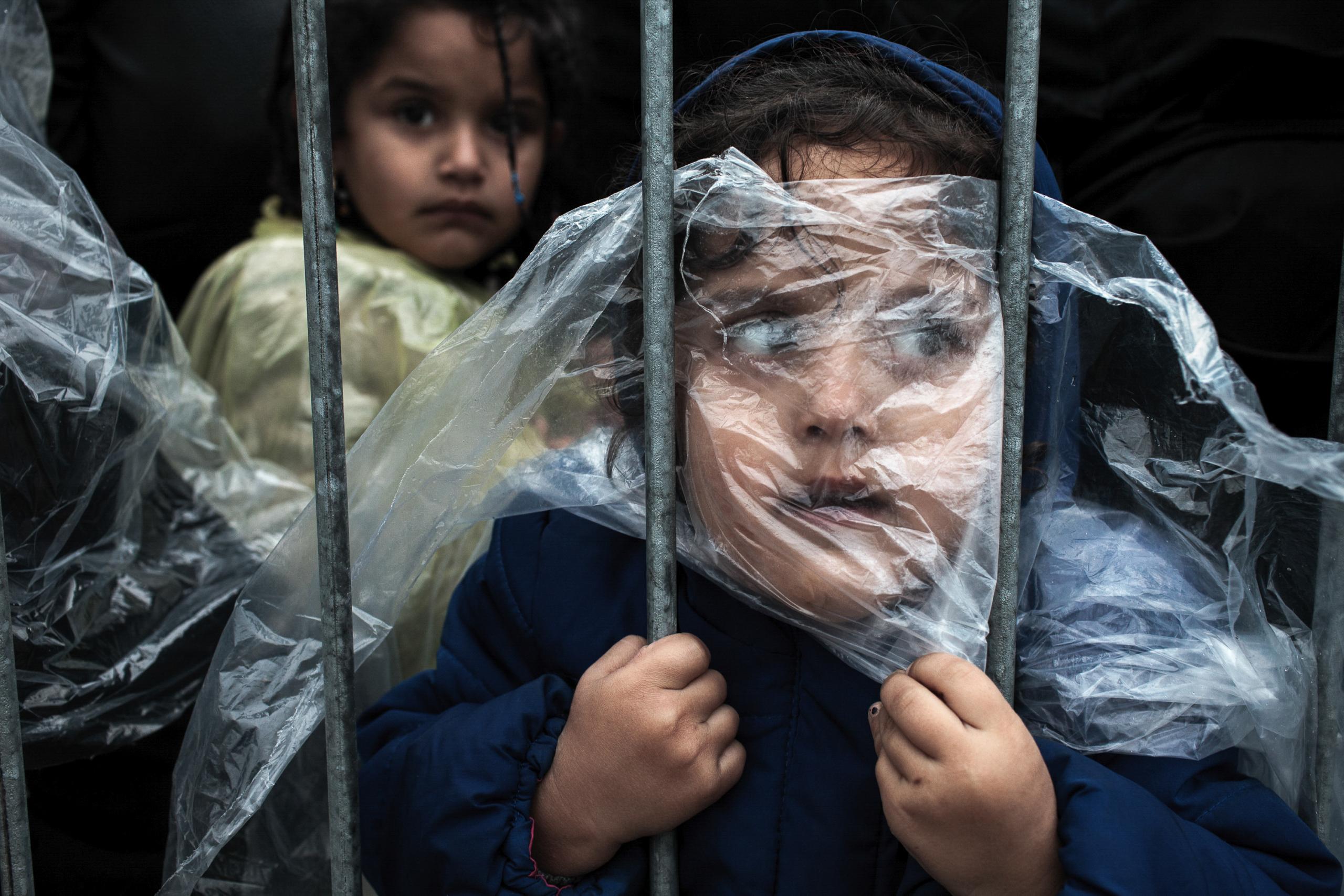
Refugee children covered in rain capes wait in line to be registered. Most refugees who crossed into Serbia continued their journey north, towards countries of the European Union.
©Matic Zorman
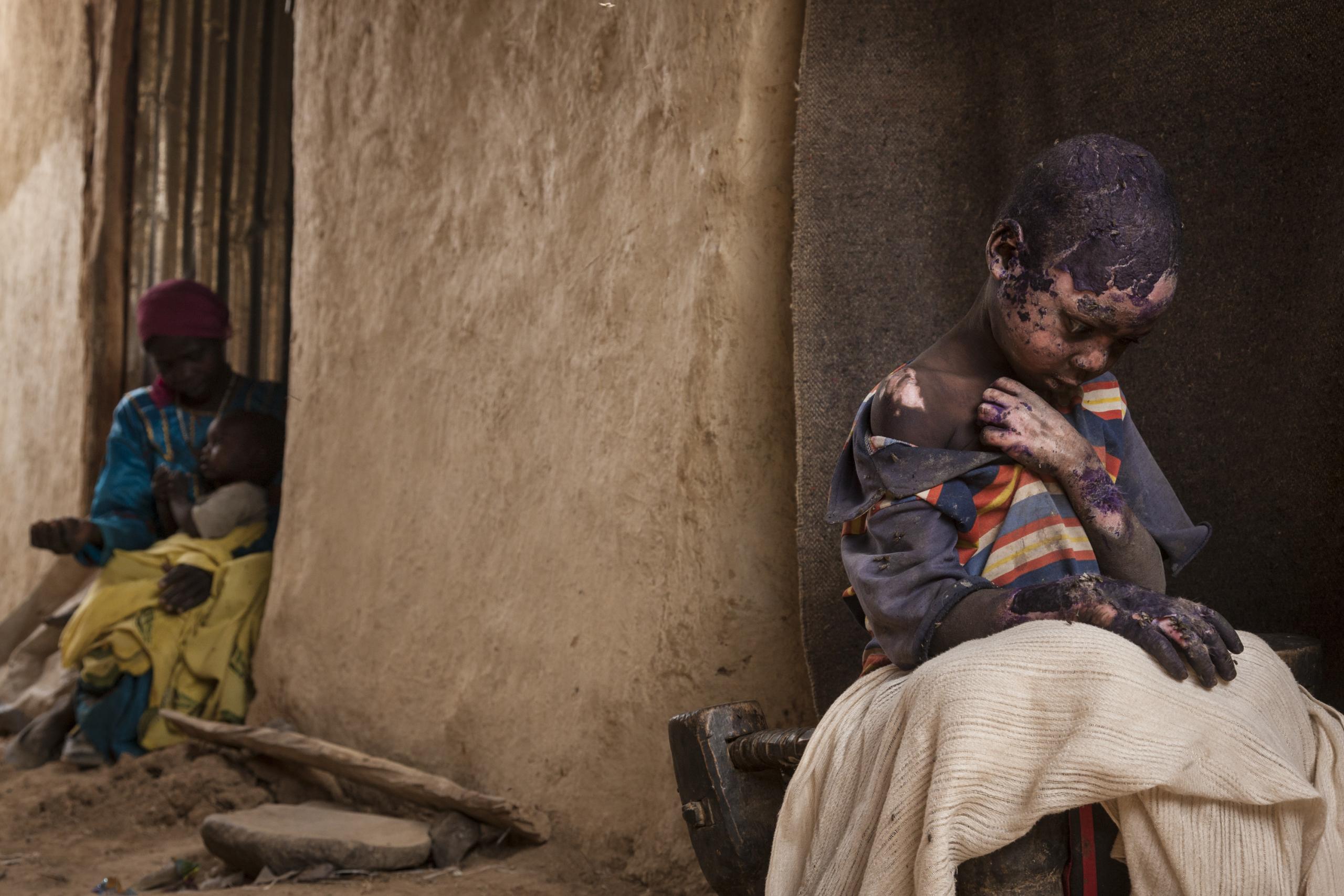
Adam Abdel (7) was badly burned when a bomb dropped by a government plane landed next to his family’s home, in rebel-held territory in Darfur. Adam was blown out of the house by the force of the blast, and his clothes caught fire. Two weeks later, his burns were still healing. Treatment was hard to obtain, because the government continued to deny NGOs and relief workers access to rebel-held territory. Unrest in Darfur ignited in 2003, after the government of President Omar al-Bashir cracked down on an insurgency. Since then, hundreds of thousands of people have been killed and millions displaced. © Adriane Ohanesian
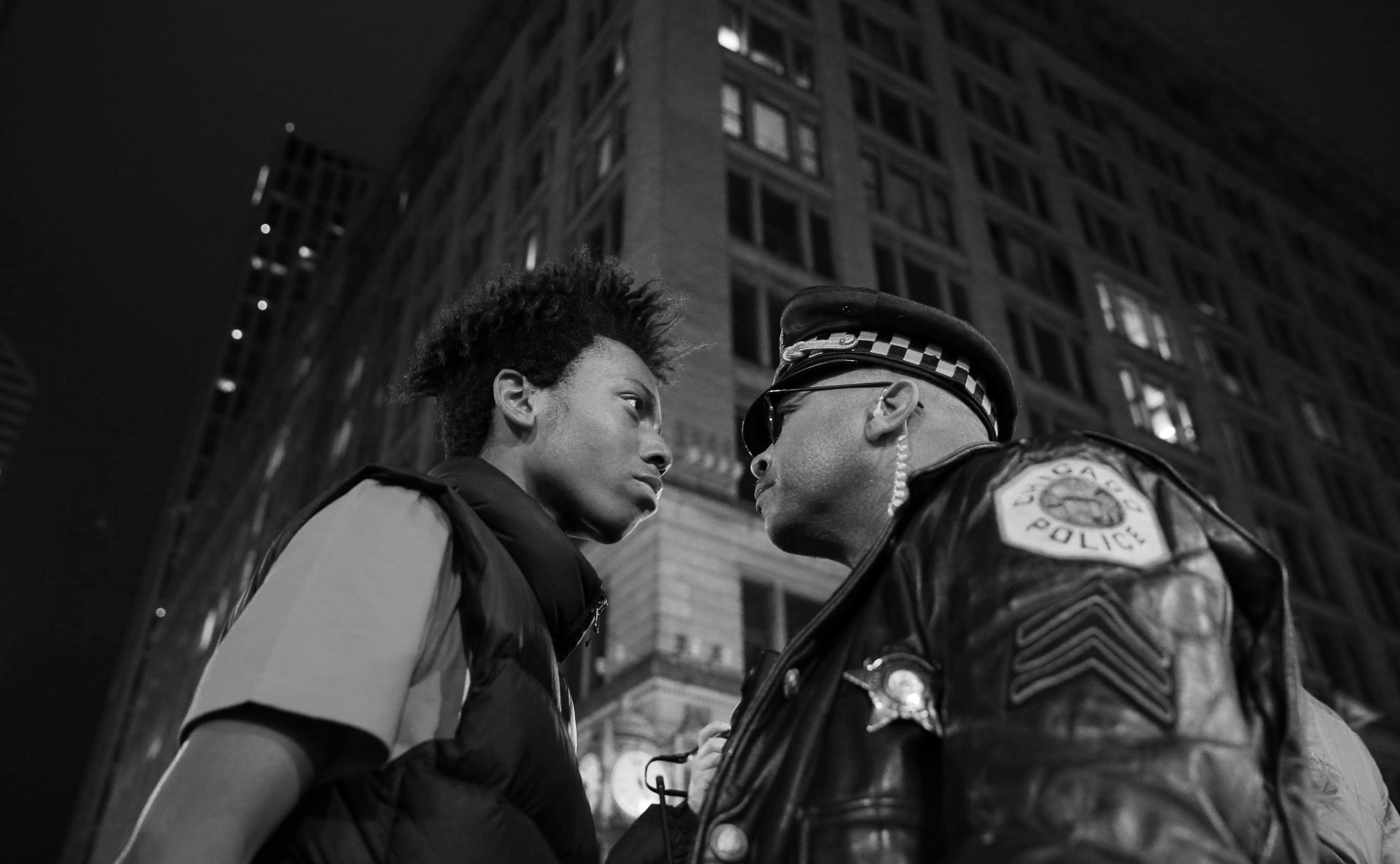
Lamon Reccord stares down a police sergeant during a march against police racial violence. Protests had taken place almost daily after the release of a police car dashcam video showing 17-year-old Laquan McDonald being fatally shot by a Chicago police officer. McDonald, who was armed with a knife, was shot 16 times by the officer, who said he feared for his life. The protest was one of a number that occurred throughout the year, following episodes elsewhere in the country where police were accused of using excessive force against black men, often involving fatal shootings. © John J. Kim
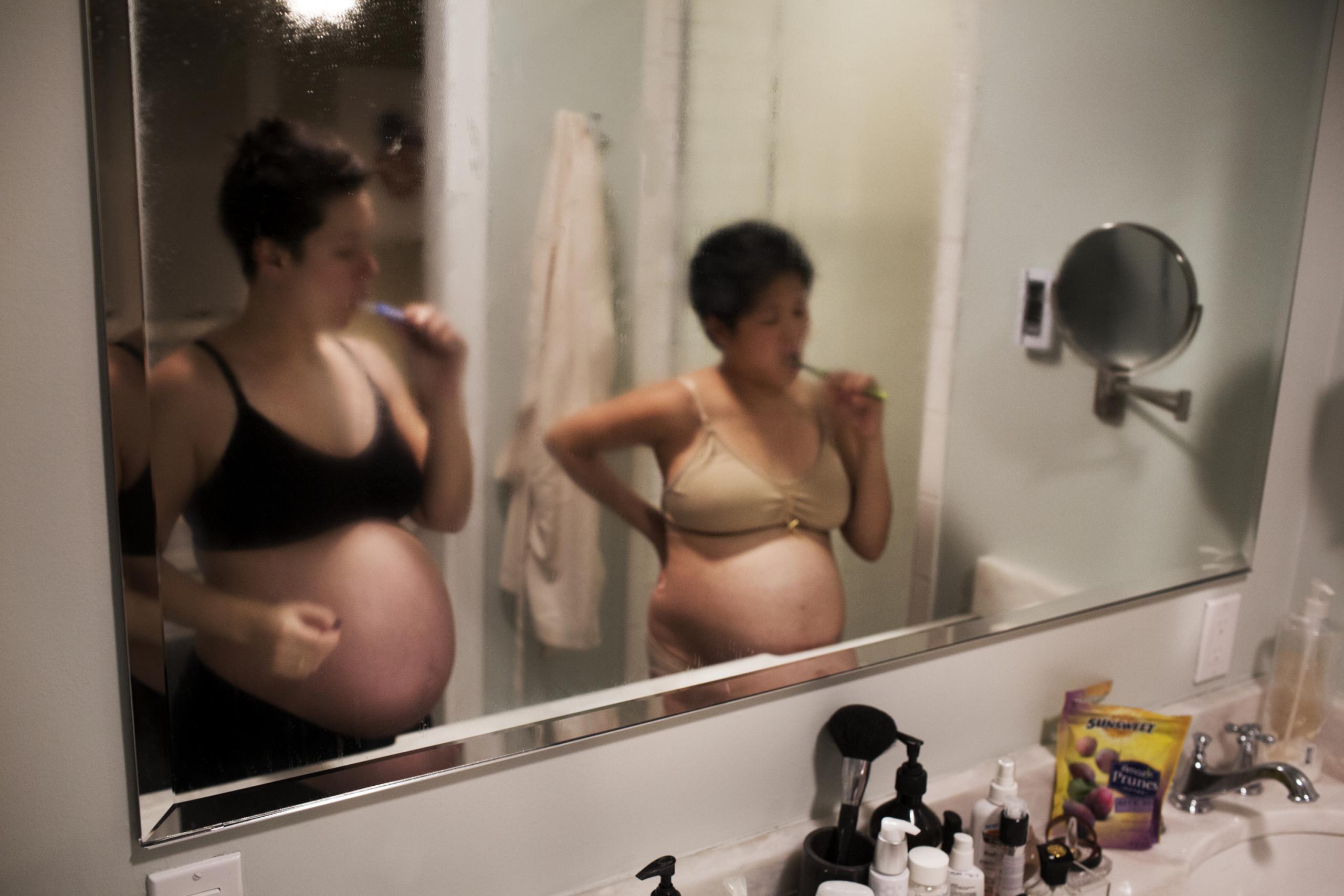
Emily and Kate are married to each other, and live in Maplewood, New Jersey. Both became pregnant at the same time, though that had not initially been their plan. Kate had been undergoing in vitro fertilization, but it appeared not to be working when she asked Emily to try, using the donor they had chosen together. Emily became pregnant almost immediately and while Kate was winding down her treatment, so did she. Emily gave birth to Reid, and Kate to Eddie, just four days apart. Kate and Emily embraced pregnancy, childbirth, and motherhood in tandem, as two women experiencing the challenges, intimacy, and transformations together. © Sara Naomi Lewkowic
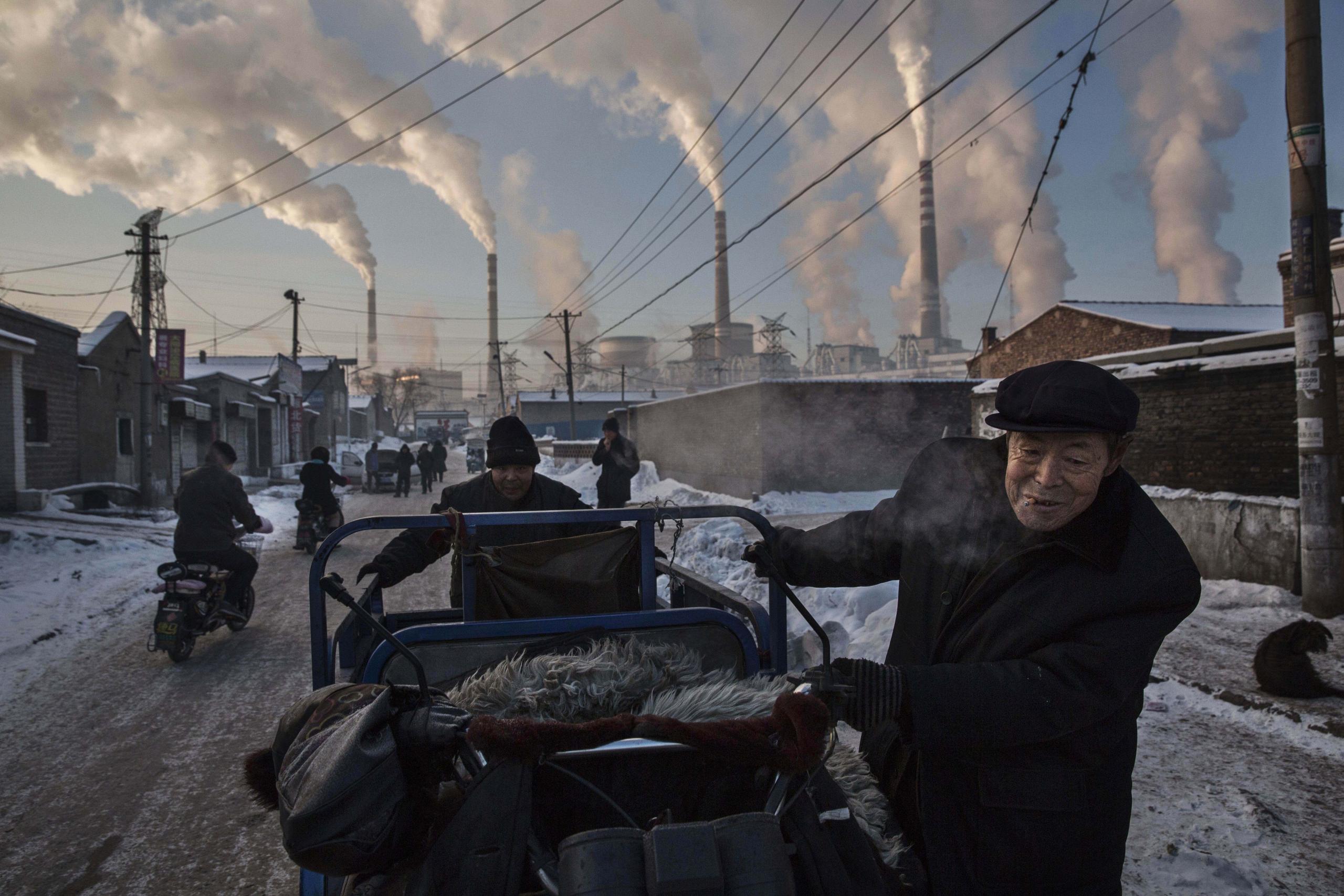
Smoke billows from stacks as men push a tricycle through a neighborhood next to a coal-fired power plant in northern Shanxi province. The region is the leading producer of coal in China, with annual production exceeding 300 million tonnes. Air pollution is estimated to contribute to around 17 percent of all deaths in China, and a heavy dependence on burning coal for energy has made China the source of nearly a third of the world’s CO2 emissions. © Kevin Frayer

A cloud of smog hangs over Tianjin, in northeastern China. Tianjin, the fourth most populous city in China, is an industrial and logistics hub. Its port forms a gateway to the national capital, Beijing. Hazardous smog blanketing China’s northeast triggered red alerts in a number of cities throughout the month, including Beijing and Tianjin. Schools were advised to stop classes, and people were told to stay inside and restrict vehicle use. © Zhang Lei
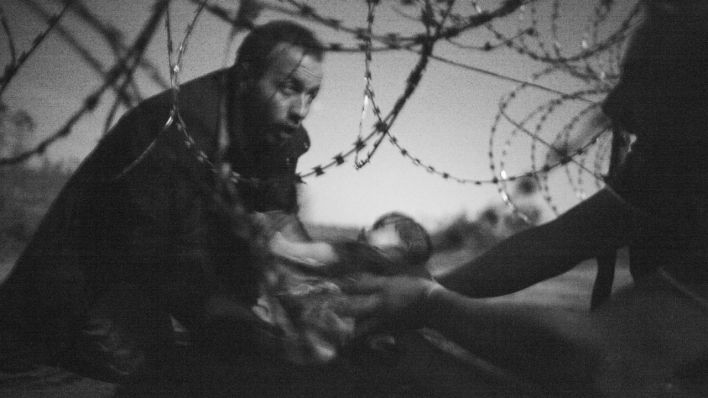
A baby is handed through a hole in a razor wire barrier, to a Syrian refugee who has already managed to cross the border from Serbia into Hungary, near Röszke. Hungary was hardening its stance towards refugees attempting to enter the country. In July, Hungary began construction on a four-meter-high barrier fence along the entire length of the frontier with Serbia, to close off border crossings through all but official routes. Refugees attempted to find ways through before the fence was completed on 14 September. This group had spent four hours hiding in an apple orchard at night, dodging border police, being gassed with pepper spray, and trying to find a way across. © Warren Richardson, Australia, 2015, Hope for a New Life – Press World Photo Awards 2016
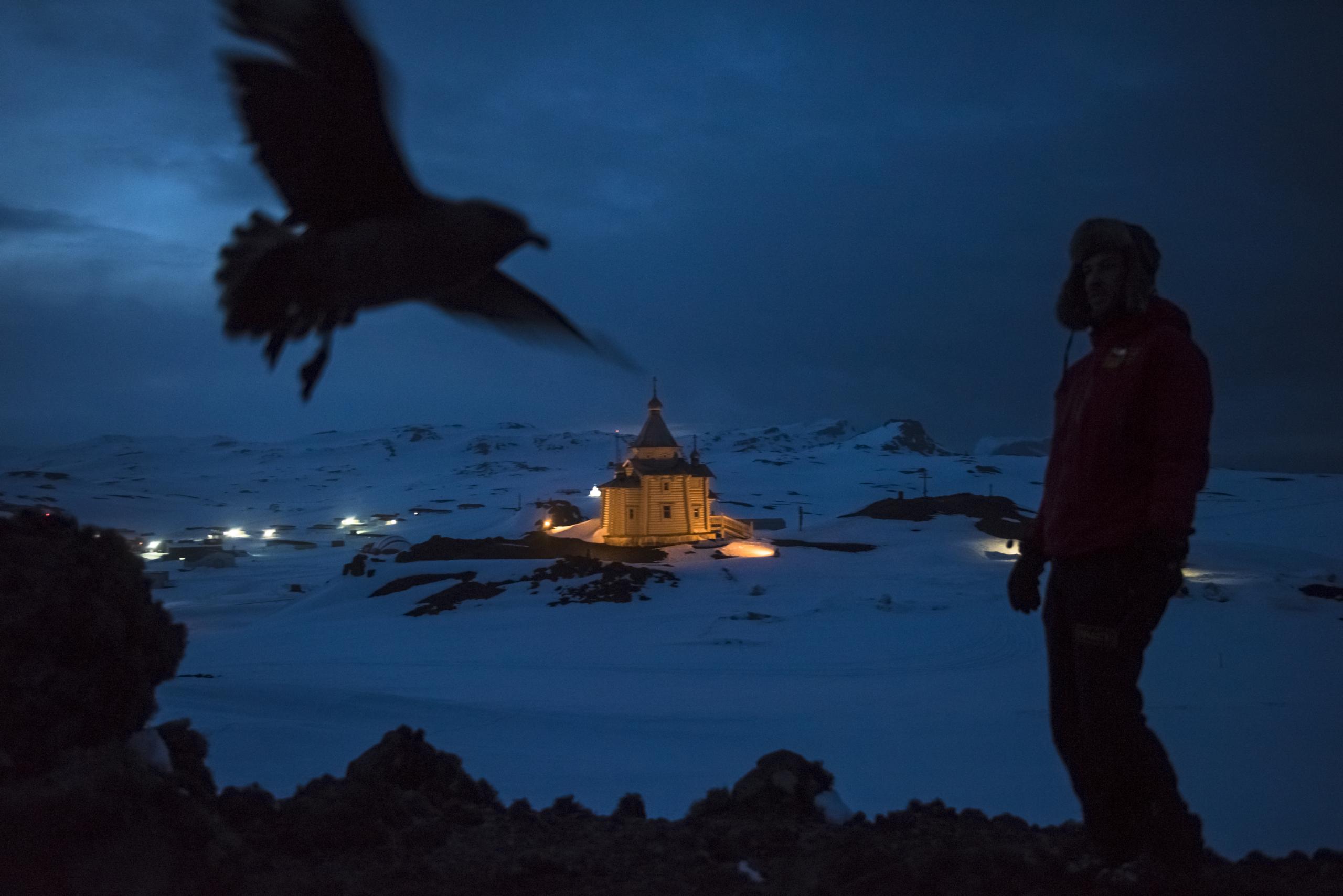
Dr. Ernesto Molina, who is supported by the Chilean Antarctic Institute, walks by the Bellingshausen Russian Antarctic base, with its Orthodox Church of the Holy Trinity, in Fildes Bay.
A number of countries, including Chile, Poland and Russia, have set up scientific stations on King George Island in the Antarctic. By the Antarctic Treaty, which came into force in 1961, Antarctica was set aside as a scientific preserve, with freedom of investigation and free intellectual exchange. No country may exploit mineral resources or exert territorial claims. The treaty is currently in force until 2048, but a number of countries have an eye on asserting greater influence before the renewal date. Some are looking to the strategic and commercial possibilities that exist right now, such as iceberg harvesting (Antarctica is estimated to have the biggest reserves of fresh water on the planet), krill fishing, and expanding global navigation abilities.
© Daniel Berehulak
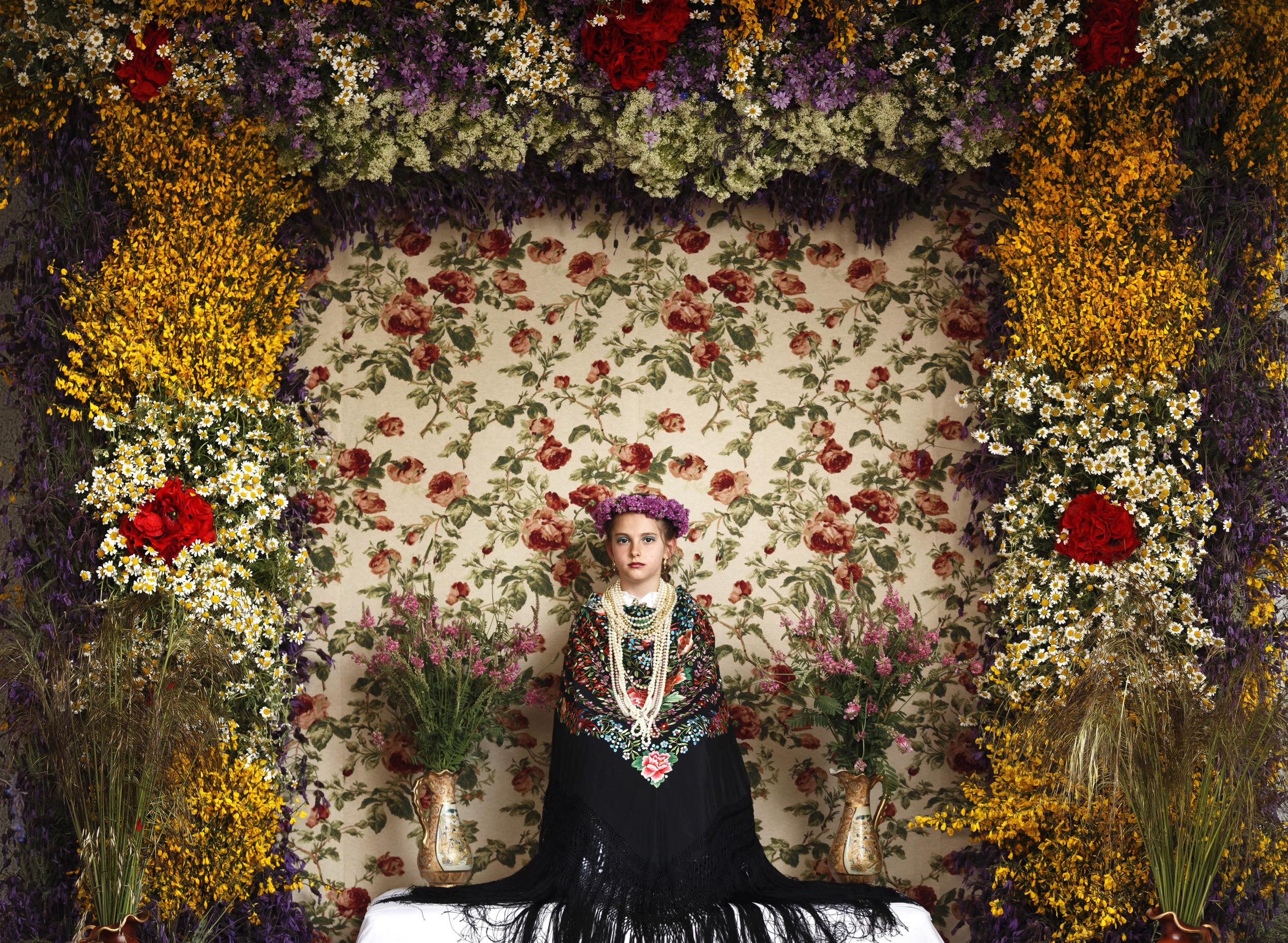
The feast of Las Mayas, in Colmenar Viejo, on the outskirts of Madrid, has its origins in pagan ritual. It is held annually at the beginning of May, to celebrate spring. Five or six groups create altars adorned with plants and flowers on the main town square and adjacent streets, and each selects a young girl between the ages of six and 15 to be a ‘Maya’. She must then sit on the altar—very still, silent and serious—wearing a white blouse and skirt, and a Manila shawl. ©Daniel Ochoa de Olza
Photo: © Sergei Ponormarev, Zhang Lei, Adriane Ohanesian, John J.Kim, Mario Cruz, Francesco Zizola, Kevin Frayer, Warren Richardson, Matic Zorman
